Strictly Come Dancing 2019: What dances do they do?
- Published
- comments
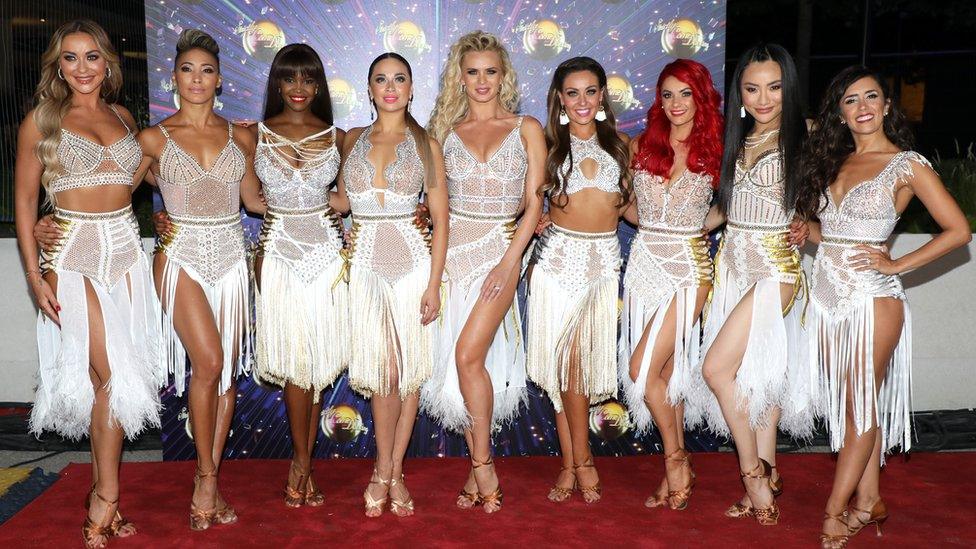
Each week, the Strictly stars and their partners will need to master a new dance category to impress the judges and make it through to the next round.
From the foxtrot to the salsa, the waltz to the jive, each dance will need to be faultless to earn the perfect four 10s from the judging panel.
So what dances will they be doing and where do they come from?
Here's your guide to the routines you'll see in the ballroom this year.
The waltz
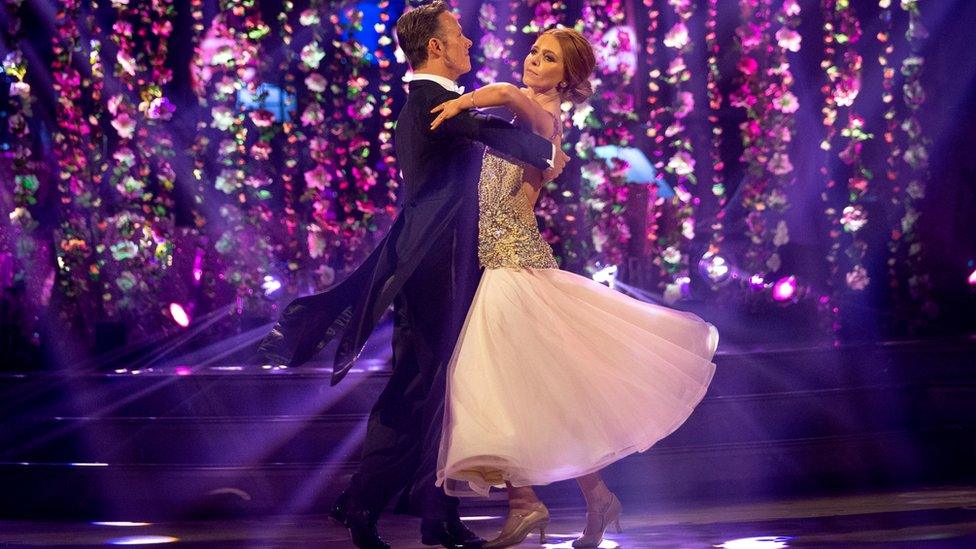
Strictly 2018 winners Stacey Dooley and Kevin Clifton perfecting the Viennese Waltz
The waltz is a ballroom dance and is seen as the smooth dance of romance. It is the most well known dance in all categories and is characterised by its enchanting rise and fall action, and gentle, flowing movements.
It was introduced at the beginning of the 19th Century, making it the oldest of the ballroom dances.
There have been many different kinds of this dance over the years. One of the most popular versions is the Viennese waltz, which is also a ballroom dance.
The Viennese waltz is so popular that it counts as a separate dance entirely in Strictly, so all of the contestants will need to master this waltz too.
The difference between the two is that the Viennese waltz is much faster and there are limited steps that the couples can use in it.
In fact, they will be limited to just three moves: natural turns (turns to the right), reverse turns (turns to the left) and change steps (which come in between the turns and allow the dancers to switch to their other foot).
The rumba
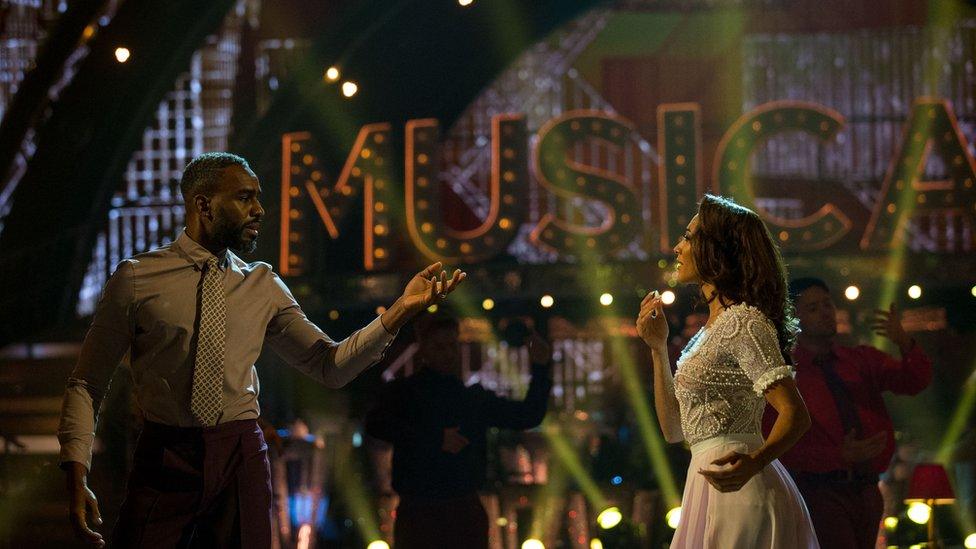
Charles Venn and Karen Clifton dance the rumba on Strictly back in 2018
Like the waltz, the rumba is a romantic dance, but it is very different in style.
It is Latin dance - not ballroom - and it is the most sensual of all of the Latin dances, as traditionally the woman tries to charm her partner with her moves.
For a rumba to be successful, there needs to be a strong chemistry between the dancers.
The hip action comes from the flexing and straightening of the legs, rather than wiggling hips, which might be the case in a different Latin routine.
The judges will be keeping their eye out for no heel leads, meaning the dancers must not walk on the heels of their feet. They will also be looking for forward or backward walks to help the dancers move around the ballroom, as well as spot turns.
The dance became popular across the East Coast of the US in the 1930s, and mixes Afro-Cuban rhythms and moves, with American big band music.
The cha cha cha
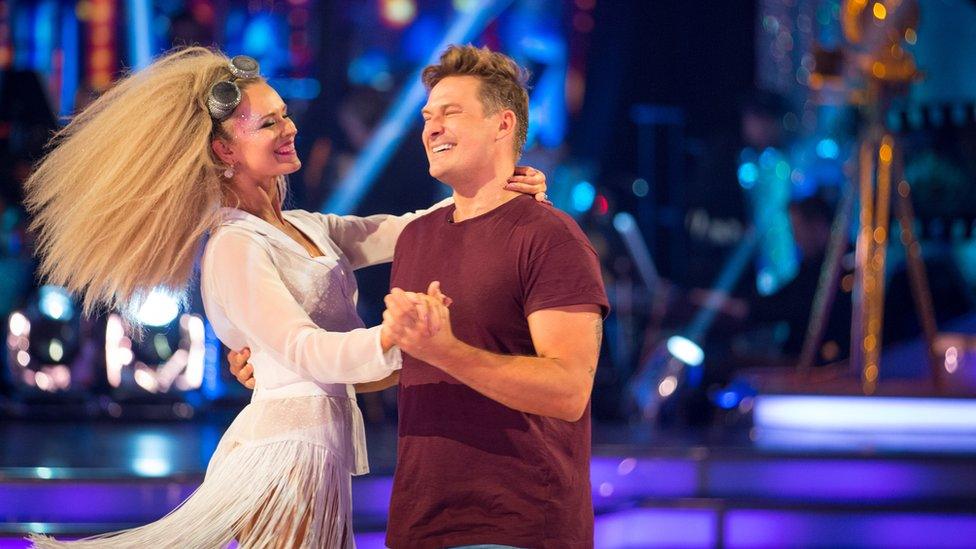
Lee Ryan and dance partner Nadiya Bychkova danced the cha cha cha as their last dance in week three of Strictly 2018
This is a dance developed from the Cuban rumba, so it's perhaps not surprising that it is also a Latin dance.
Dance teacher Pierre Lavelle began to teach the cha cha cha in 1952 after returning from a trip to Cuba.
He noticed that people in Cuba were dancing a rumba but adding extra moves - so he decided to teach it as a separate dance entirely and the cha cha cha was born.
Both dances have the same basic steps, but the cha cha cha is bright and lively, where the rumba is slower and more sensual.
Dancers should perform it with a slightly cheeky edge too, so it's always a fun one to watch!
The judges will be looking for synchronised movements between the couples and checking that the dancers' legs don't move outside of their body frame.
The foxtrot

Last year's winners Stacey and Kevin did a foxtrot in the final
The foxtrot is a smooth ballroom dance that should zigzag across the floor.
In 1914, an actor named Harry Fox performed a new dance routine at a New York Theatre. Theatregoers loved the dance and began to copy it, and in tribute to Mr Fox, called it the 'Fox's Trot' - and the name developed from there.
The timing is slow, quick, quick, slow and the steps are made in a trotting manner, but it must still be a very smooth dance, with no jerkiness.
The Strictly judges will be looking to make sure the dancers cover the floor well and keeping an eye out for the zigzag movement around the ballroom.
They will also want to see what's called a feather step, when traditionally the male dancer steps outside of his female partner, as well as weaves, which are six 'quicks' in a row.
The paso doble
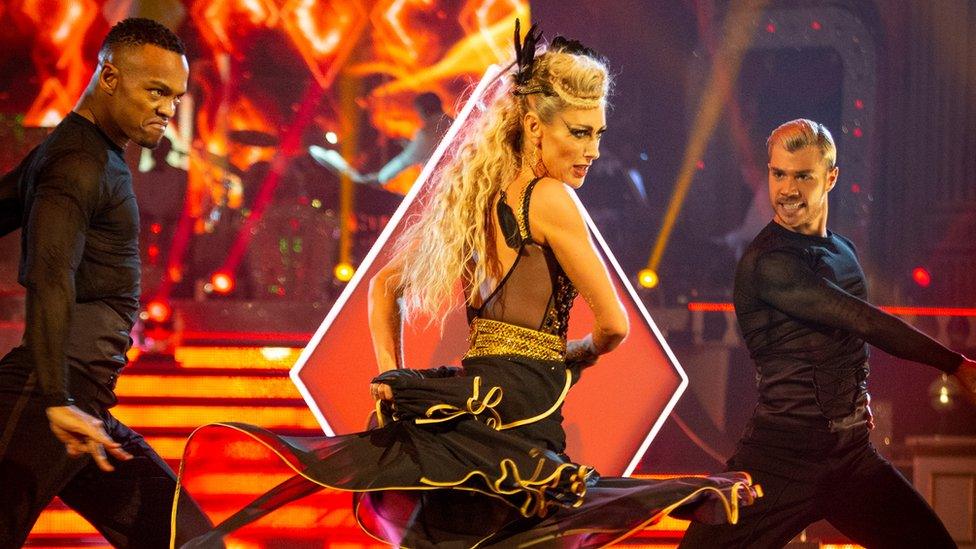
Faye and Giovanni performed an electric paso doble in Blackpool last year
The paso doble is a colourful Latin dance, based on the tradition of bullfighting.
The man represents the bullfighter or 'torero', while his female partner is the red cape or 'cappa'.
The judges will want to see a dramatic dance with a marching beat, displaying the sharp movements for which the paso doble is so well known.
There should also be elements of flamenco dancing included, which will be seen in the footwork and arm movements.
The judges will be looking for apels from the men, when they dramatically stamp their feet, as well as strong walks around the floor, which should be carried out on the heels.
The quickstep
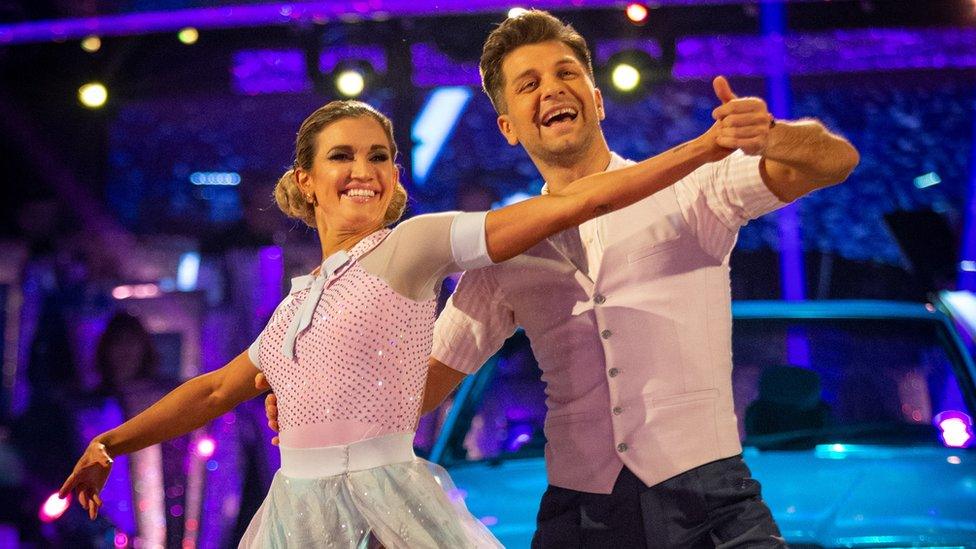
Ashley and Pasha performed the quickstep to Don't Rain on My Parade last year
The quickstep - a ballroom dance - is one of the dances that many celebrities dread, as it requires light, bright and pretty tricky footwork - all done at speed, as the name would suggest!
In the 1920s, many bands played the quickstep too fast and couples couldn't keep up. Over time, a new version developed which brought in elements of faster ragtime dances such as the Charleston, making it the quickstep as we know it today.
Most of the moves need to be up on the toes because of the speed of the dance.
Judges will be looking for three key moves - shasses, which are three steps going to the side; locksteps, in which one foot crosses behind the other; and spin turns, like in the waltz.
The salsa

Graeme Swann and Oti Mabuse danced a fitness-themed salsa for week eight of Strictly 2018
The Cuban salsa is Latin dance which Strictly fans always look forward to seeing the celebrities performing, as the couples often have a bit of fun with it!
There are lots of different kinds of salsa, but it is the Cuban version - created by Cuban immigrants in New York - which we will see in the Strictly ballroom.
The term 'salsa' means sauce, so the dance should be full of funky moves with a side portion of sassy attitude.
It's a fast dance and the couple performing it need to have lots of chemistry.
The jive
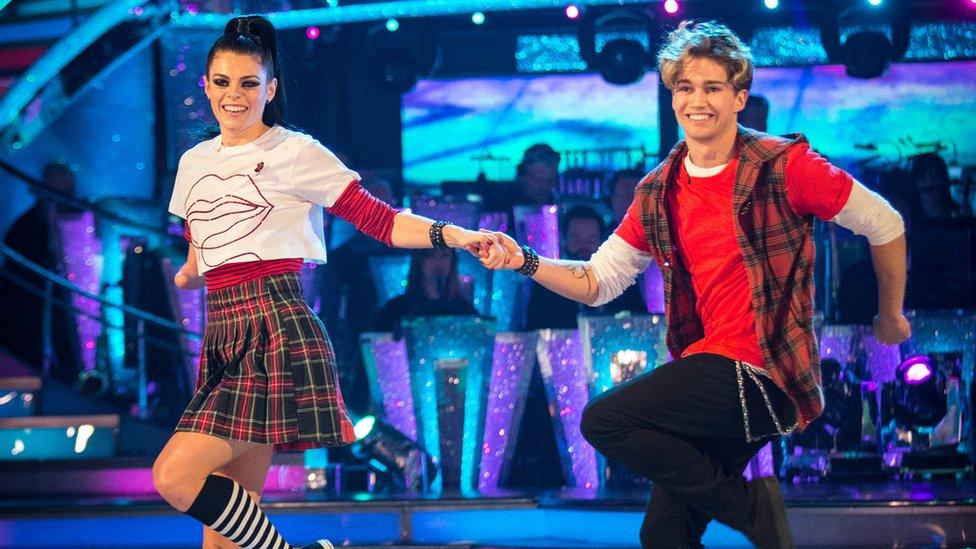
AJ Pritchard and Lauren Steadman dancing the Jive in 2018
Like the quickstep, the jive is another dance that celebrities either can't wait to get their teeth into or absolutely dread!
That's because the Latin dance is hugely energetic, and needs to be full of kicks, flicks and spins - and very fast.
From its beginnings in 1927, the dance soon became associated with youth. Older people disapproved of it and even tried to ban it from dance halls!
When watching the jive, it should feel like time-travelling to the 1930s.
Unlike many ballroom dances, there must be no softness in a jive, with lots of sharp action, plenty of kicks and flicks, and pointed toes. Kicks should come from the hips, while flicks should come from the knee.
Judges will also be looking for something called American spins, when traditionally the man lets go of his partner and lets her spin out on her own.
The samba
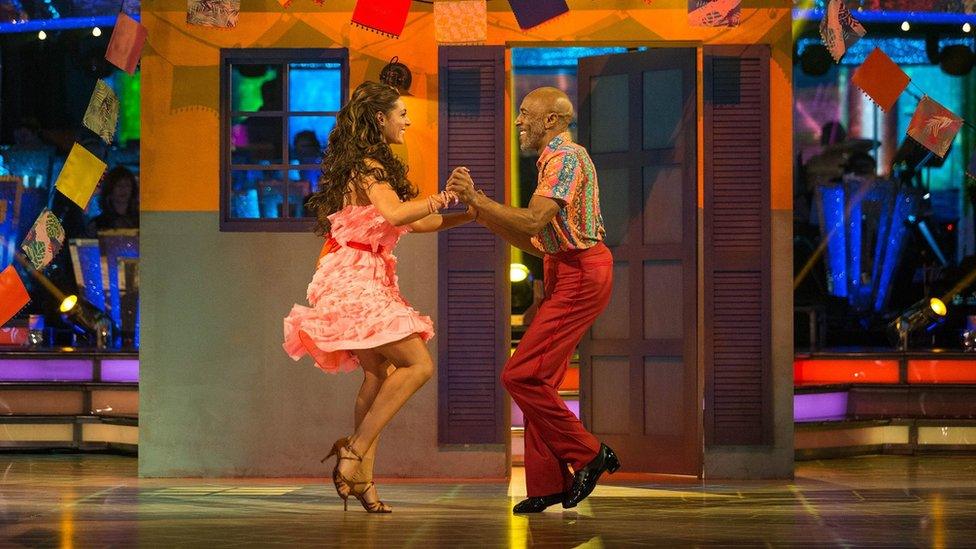
Amy Dowden and Danny John-Jules dancing the samba
The Samba is a Latin dance with origins that go back to Africa. It first became popular in Europe in the 1920s.
When watching the samba, the audience should feel transported to the carnivals of Rio, as it is a fun, party dance - so unsurprisingly, it's another one that gets Strictly fans dancing on their sofas!
It's a very rhythmic dance, which should have lots of bounce action and fluid hip movement throughout.
The dancers should also move together in perfect unison, so it's much harder than it might look!
Argentine tango
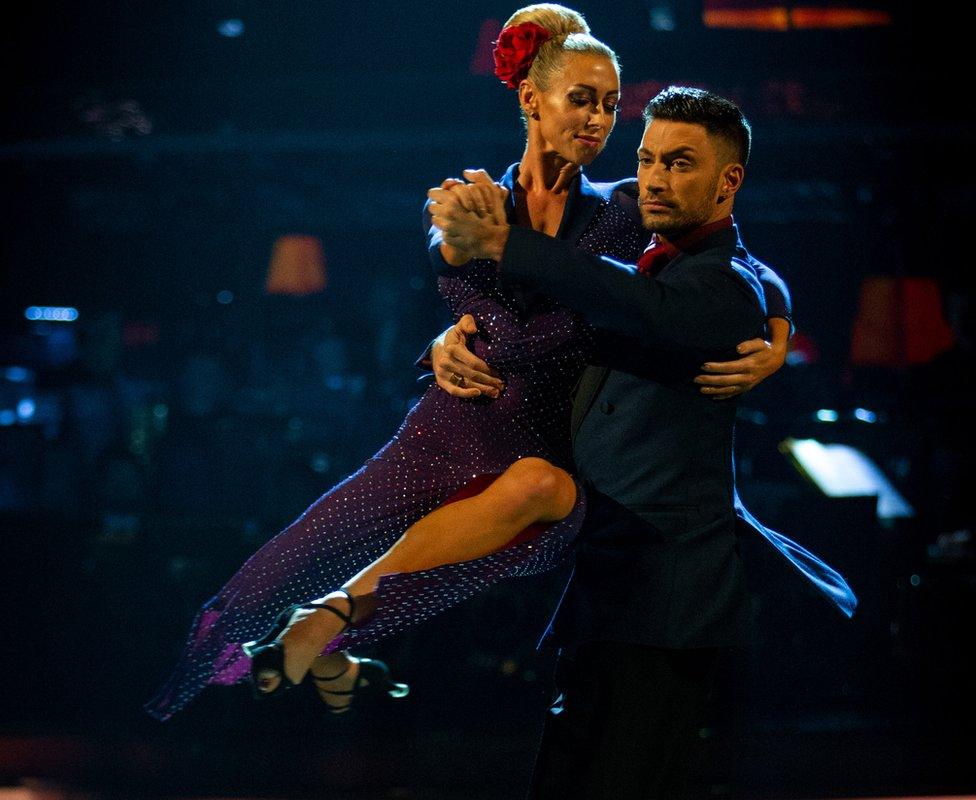
Faye Tozer and Giovanni Pernice impressed the panel with their passionate Argentine tango during last year's Strictly
The Argentine tango is another sensual Latin dance, although it is very different to the rumba.
Despite the name, it is also very different to the ballroom tango, as the couple dance closer together and it is much more fierce in attitude.
It spread to Europe the early 20th Century when wealthy Argentineans moved to Paris. By 1913, it had become a worldwide hit.
The couples' upper bodies should remain close together, while their lower bodies are apart, so it's a tricky hold to pull off.
The top half should remain fairly still, while the lower half of the dancers' bodies will be much more active.
The Strictly judges will want to see front and back ochos (forwards and backwards walks, with a pivot in the middle, making a figure of eight shape - as 'ocho' means 'eight' in Spanish), as well as swivelling hip action called boleos.
American smooth
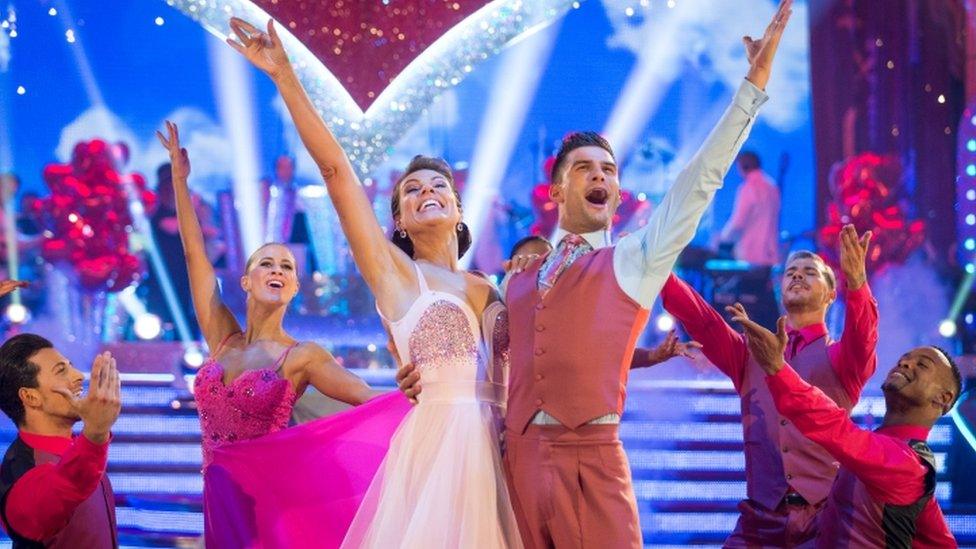
Kate Silverton and her professional partner Aljaz Skorjanec performed their American smooth to Everlasting Love by Love Affair on week nine of Strictly 2018
The American smooth is an exciting ballroom dance featuring lifts, spins and drops.
It actually includes steps from three other ballroom disciplines - the waltz, the Viennese waltz and the foxtrot.
It is more fancy and creative than normal ballroom dancing, though.
Partners are not required to maintain continuous body contact throughout the dance, but they will be expected to remain in hold for 40% of the routine, else they should be expected to be marked down.
Some of the moves that judges will be looking out for - spins, parallel turns and standing side by side - would never be allowed in more traditional ballroom dancing, so it's certainly a fun discipline.
Couple's choice

Joe and Dianne chose a street and commercial routine for their couple's choice dance last year
Finally, in addition to the more traditional ballroom and Latin disciplines above, the couples will be expected to perform a couple's choice routine.
This was a new category introduced in 2018 and allows the celebrities and their partners to choose from one of the following three disciplines: contemporary, street commercial, or theatre and jazz.
All of these styles have guidelines, but the couples are much more free to interpret them how they would like, as the dances are not restricted by frame, hold or lifts like the more traditional dances above.
Contemporary is modern, expressive, lyrical and should combine elements of ballet. This dance is all about the fluidity of movement.
Street commercialcovers a range of styles and could be inspired by hip-hop, funk, breakdance or even pop music videos.
Theatre and jazzincludes modern jazz, musical theatre and even burlesque.
Which of the dances are you most looking forward to seeing this series? And who do you think will be good at which ones? Let us know in the comments below!
- Published4 March 2019

- Published6 August 2019

- Published26 February 2019

